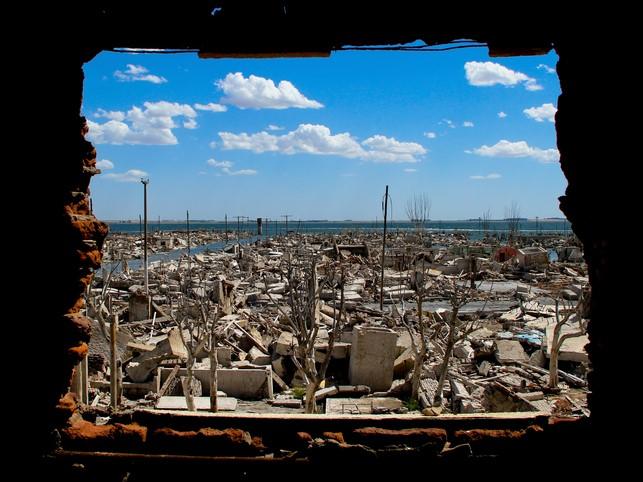
The campus is dead, long live the campus
Potential post-Covid changes to campus design will slide along a spectrum from optimising space to rethinking academic structures, says Jay Deshmukh

As campuses worldwide mark one year since the sudden switch online, the question must be asked: has this experiment pronounced the campus dead? As an architect who believes the environment is the third teacher, I’ve been motivated to discover the lasting effects of a year of the distributed, digital campus. Since spring 2020, I’ve interviewed more than 125 faculty and students at more than 100 institutions, gaining perspective into how their ongoing experiences will reshape university life.
With campuses largely closed, some schools still attempted to build and maintain a sense of community: the University of Pennsylvania recreated its engineering buildings on virtual platforms to host weekly events for spontaneous meetings; despite all-virtual classes at the University of Cape Town, dorms became learning communities for those who couldn’t return home; at Keio University, in Tokyo, cross-disciplinary intersections at a Hacking Studio (an “integrated ‘Build to Think’ space for discussions and brainstorming sessions”) had students “filling in the gaps” for each other. Each demonstrates the connective tissue that scaffolds academic engagement and well-being.
In regions where the pandemic was managed well (Taiwan, Singapore, New Zealand), fewer changes are expected of the post-pandemic campus. This is also true where technology access is uneven or the cost of higher education is less contentious. But where high tuition fees have exacerbated student debt (the UK, the US, Canada), examining the return on investment associated with the traditional campus is urgent.
Undoubtedly, this massive digital delivery experiment will generate numerous forms of hybrid education. Whether it rings the death knell of 400-person lecture halls or fragments the campus will vary depending on funding models, institutional reputation and culture, and student motivation. The urge to divest cost-generating assets is powerful, and harnessing changes to strategically reduce the campus footprint – to build, operate and maintain less – is critical. My research suggests that such endeavours should be nuanced, innovation-focused and sustainability-led, not one-size-fits-all.
Potential changes to campus design will slide along a spectrum from optimising space utilisation to rethinking academic structures. Even small shifts from in-person to hybrid futures will demand more of universities’ physical infrastructure to facilitate formal and informal learning. Consider the shift from in-person lectures to asynchronous virtual delivery – in a post-pandemic context, this will emphasise outside-class-hours engagement via tutorials and peer-to-peer learning. Large, tiered, collective spaces will be freed up while more synergistic learning spaces for two to eight people will be required.
With greater individual choice in determining educational journeys, many courses will evolve into hybrid formats mixing virtual and place-based learning, and to online-only formats. As four-year degrees are questioned, stacked credentials gain currency and lifelong learning becomes the norm, students will demand flexible access to higher education. Facilities will have to be agile to accommodate frequently varying requirements. By constructing technology-enabled, flexible, scalable, interconnected physical structures, campuses can shape hybrid spaces where activities and functions can differ, and diverse participants can interact physically or digitally.
An increased appetite for self-motivated, independent learning could make undergraduate spaces begin to resemble graduate school. When transitioning from unified, teacher-led activities to independent study and cross-disciplinary exploration, multifunctional settings for focused study, debate and small-to-medium projects gain relevance. Such spaces inspire curiosity and connect-the-dots-type synthetic thinking. Interspersed between formal “classrooms”, active spaces with writeable walls, display cases, projectable surfaces, transparent, movable walls and mobile furniture become places where people and ideas can commingle. The promise of having one’s intellect challenged between classes and uncovering associations not previously contemplated – these daily occurrences aren’t easily replicated online and should be at the centre of campus reinvention.
Further, convergent forces of AI and work-oriented learning should prompt place-based education to concentrate less on knowledge dispersal and discipline-specific skills − which can be developed virtually − and more on right-brain attributes such as learning, unlearning and relearning. In addition to growing the footprint for research, experiential learning should expand beyond STEM environments. All fields benefit from kindergarten-inspired places where discovery and innovation come from making, observing, experimenting and collaborating − where ideas are constructed and deconstructed in equal measure.
The monotony and scripted behaviours of Zoom school has changed communication and participation too. The absence of the natural rituals of campus life − corridor chats, shared humour and simply hanging out, all of which build collective identity and community − reminds us that they are critical in developing empathy, rapport and whole-person growth. To quote a student I interviewed: “In clicking from Zoom class to Zoom class, I miss running into people who are not yet my friends; those spontaneous interactions that propel you through the day.”
The future of work predicts that the attributes of resilience, (thriving in) ambiguity, optimism, openness and entrepreneurship will be more critical than discipline-specific competencies. This implies that delinking spaces from specific faculties is no longer a radical concept. If institutions lean in to cross-faculty interaction, redefined spaces for students and teachers can be shared and programmed across schools.
For example, as business schools delve into design thinking and scientists embrace creativity, the potential uses of art and design studios extend beyond the typical. Similarly, the physical address of a bioethics course can fluctuate across the conventional humanities versus sciences divide. Taken further beyond institutional-brand boundaries, symbiotic spaces can be decentralised and distributed – collocated with off-campus housing, museums, libraries, community centres and even industry – effectively creating cities of learning.
Learning is social, and the active construction of knowledge, identity, culture and engaged citizens extends far beyond the classroom. Amid radical change, contemplate this critical reminder from a professor of anthropology: “Space for creating knowledge matters. How you sit matters. Where you sit matters. Whether you can make eye contact matters. How often you can speak matters. To co-create knowledge, you need to be together. It isn’t accidental − creation happens in the interactive, interpersonal spaces.”
Jay Deshmukh is senior architect and associate, IBI Group – Global Learning+ Studio. She is an award-winning architect with more 20 years of experience in institutional architecture projects in Canada, the US and beyond, such as the multidisciplinary Health Sciences Campus at the University of Ottawa, the “Campus of the future” at Amity University Dubai and the Student Centre at the University of York.


